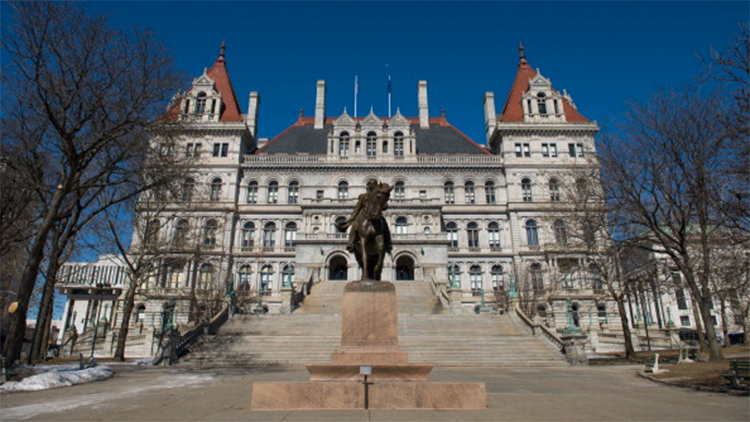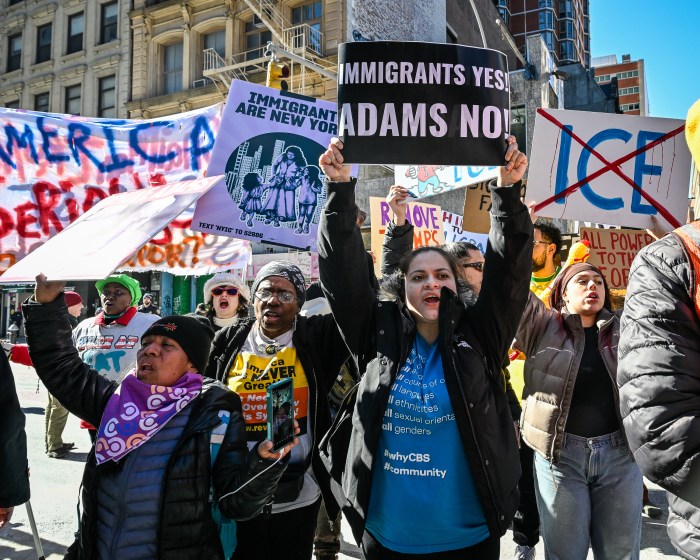This November, one of the most important propositions of the last 20 years will be on the statewide ballot, and few, other than political insiders, are even aware of it. That public referendum will determine whether or not New Yorkers will convene a convention to amend our state constitution.
Founded in 1777, our state constitution pre-dates even its U.S. counterpart.
In 1801, New Yorkers held our first constitutional convention to discuss the original. At a subsequent convention, it was decided that every 20 years a vote would be held to ask if voters wanted to conform their constitution to the changing times.
Make no mistake, some of these conventions have led to historic change.
In 1821, the public removed the requirement that voters be property owners.
The 1846 convention placed limits on lawmakers’ ability to impose too much debt on the taxpayers.
In the post-Civil War convention of 1867, prohibitions against blacks owning property were eviscerated.
The 1894 convention of the Grover Cleveland era provided the basis of our present constitution, including the establishment of the civil service system, the requirement to obtain home rule messages from localities and prohibiting public funds being dispersed to religious institutions.
The Depression era convention of 1938 ushered in liberal laws protecting rights related to labor, housing and the indigent. Nine amendments were proposed separately, with six passing.
But the convention of 1967, in the midst of one of America’s most tumultuous periods, saw all its many propositions struck down because delegates decided to place them all in a single up or down vote. While liberals were delighted with the amendments to provide free college tuition, lowering the voting age to 18, and creating an independent reapportionment system, they deplored a conservative amendment to end the ban on funding religious institutions. Combining them in one vote doomed them all.
In a rare occurrence, another convention attempt was posed to voters just 10 years later. But voters declined to convene one then, as they did again in 1997.
And this November we are poised for a chance to have the first convention since 1967.
So, should we vote yea or nay? We, at the Center for Cost Effective Government, give a conditional yea. Conditional, because depending on who winds up controlling the convention, it can either usher in desperately needed reforms or possibly make matters even worse.
In 1967, two-thirds of the delegates were lawyers, 20 percent were judges and most were beholden to the same special interests that controlled the state legislature.
If the public supports the upcoming vote, three delegates will be elected in November 2018 in each of the 63 Senatorial district throughout New York. (There will also be 15 at large delegates.) Amendments passing at the convention would then go before all voters for final approval on the statewide ballot in November 2019.
Yes, the unions and special interests, already so deeply organized, have the potential to derail the convention, but it’s probably worth the risk.
Does anyone believe that the present crop of elected officials in Albany will stand up to the unions and eliminate the Triborough Amendment, which provides automatic salary step increases (even after the contract has expired), or end mandatory arbitration that has given some law enforcement personnel $225,000 annual salaries?
Would they have the resolve to require new employees to take a 401(k) type of pension similar to the private sector, so taxpayers are no longer on the hook for guaranteed 7.5 percent returns on the pension fund?
Does anyone believe the legislature would end the Scaffold Law that adds $10,000 to the construction of any new home in New York, or the Wicks Law that unnecessarily increases the cost to construct a public building in New York by up to 30 percent?
If you think there’s a snowball’s chance in hell that the state legislature will finally see the light and pass these reforms, then vote against the constitutional convention. But if not, let’s roll the dice and give it a chance. It may be the only shot we will ever get in our lifetimes to stop the annual exodus of 185,000 New Yorkers to cheaper states.
And finally, if as a fiscal conservative you are still on the fence, there is one other reason to vote yes: the unions are opposing it big time. Nothing could be scarier for them than to grant we the people the opportunity to exact reform by bypassing the elected class that they so thoroughly control.
Steve Levy is Executive Director of the Center for Cost Effective Government. He served as Suffolk County Executive, as a New York State Assemblyman, and host of “The Steve Levy Radio Show.”


























